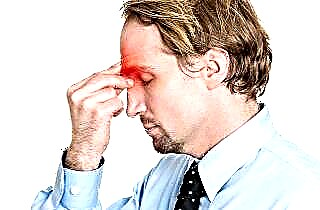The emergence of severe pain in the heart area after physical exertion is a characteristic symptom of ischemic organ disease, the main cause of death in people of working age. Correctly selected exercises strengthen blood vessels and prevent the development of pathology. But exhausting training, improper work and rest regimes lead to depletion of the heart muscle and disruption of its normal functioning.
Sport and the heart: mechanisms of influence
Among sports activities, there are cardio workout... This is a special set of exercises that is aimed at increasing the strength and endurance of the heart muscle. This group includes:
- swimming;
- run;
- race walking;
- a ride on the bicycle;
- classes on treadmills and an orbit track.
The contraction of muscle fibers during physical exertion is accompanied by an increased expenditure of energy, which comes from the blood. To compensate for oxygen starvation, the cardiovascular system responds with an increase in the frequency of contractions and an increase in blood pressure.
Long-term engagement in various sports provokes such physiological changes in the heart as:
- Increase in myocardial muscle mass (hypertrophy) with expansion of the left ventricular cavity. The deviation is determined by probing (there is a displacement of the apical impulse to the left of the midclavicular line).
- An increase in the force of contractions leads to increased pulsation of the peripheral vessels. After all, the work of the heart is dictated by the Frank-Starling law: the longer the muscle fiber, the more force it contracts.
- An increase in systolic volume (the amount of blood that flows from the ventricles of the heart into the vessels with one contraction).
- Decreased heart rate (bradycardia). In athletes, the heart rate can be 40-60 beats per minute (in ordinary people - 60-80).
- Decrease in blood pressure by 15-25 mm Hg. Art.
Such changes in the absence of complaints of pain arising in the organ after exercise are called the term "Sports heart"... In medical practice, this condition is characterized by two options: physiological and pathological.
The physiological form develops with a gradual increase in strength and endurance, the correct selection of the intensity of cardio training. In this case, the growth of muscle mass is accompanied by a simultaneous proliferation of capillaries.
With a bad option, the dimensions of the organ cavities expand uncontrollably, which is characterized by a disruption of adaptive capabilities. An abnormal athletic heart is one of the causes of sudden death.
Why is pain during training dangerous?
Correctly selected physical exercise is one of the methods of preventing diseases of the cardiovascular system. However, there are conditions when even a slight load causes pain in the heart when playing sports:
- Coronary artery disease (exertional angina) - due to impaired blood transport to the myocardium through the narrowed lumen of the coronary vessels. This disease develops in people with atherosclerosis. An attack of pain is characterized by retrosternal localization, irradiation to the left arm and shortness of breath.
Symptom problems in athletes are associated with an increase in myocardial mass, which leads to increased requirements for nutrients. With intense exercise, the need for an adequate supply of oxygen increases, causing a vicious cycle.
- Hypertrophic cardiomyopathy - non-inflammatory damage to the muscle mass of the myocardium, which is characterized by an increase in the number of fibers with a decrease in the volume of the heart chambers, as a result of which the amount of ejected blood decreases.
- Uncontrolled use of hormonal and anabolic drugs... Heart pain after bodybuilding is often associated with protein and testosterone supplementation, which can help build skeletal muscle. However, the use of uncertified drugs in unregulated doses is accompanied by a lag in the development of internal organs, especially the heart, which does not have time to adapt to ensure sufficient blood supply.
In addition, a significant increase in the volume of the cavities of the heart develops arrhythmia and congestion in the chambers with the formation of a blood clot. Such processes lead to the occurrence of thromboembolism - blockage of the vessel lumen by a thrombus, which require urgent treatment.
Conclusions
Regular sports and bodybuilding with the correct use of dietary supplements and drugs do not pose a threat to the functional state of the heart. However, due to the individual characteristics of a person, the presence of concomitant diseases and non-compliance with the exercise technique, there is a risk of aching, stabbing and burning pain behind the sternum.
Athletes who have heartache after exercise are advised to stop exercising and seek medical attention. Physicians, in turn, use a comprehensive approach to diagnosing the underlying cause of pain so that treatment advice is most appropriate.



